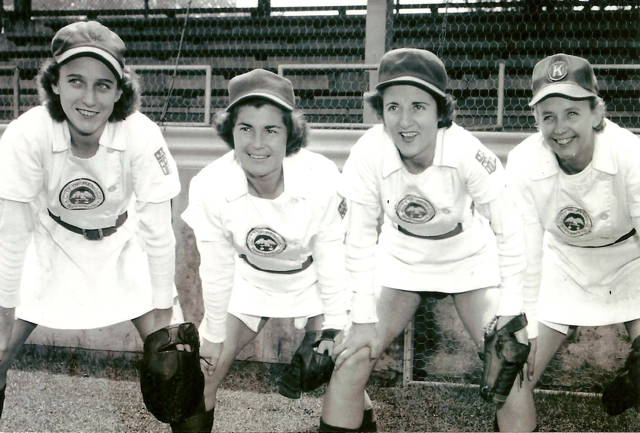
Thirteen-year-old Delores Brumfield got out of her grandmother’s automobile and walked onto the baseball field at Pascagoula, Mississippi. It was early spring, 1946.
She reported to Max Carey, president of the All American Girls Professional Baseball League (AAGPBL), who was supervising the league’s spring training try-outs for new prospective players.
“I had been pitching boys’ baseball back home, so I tried out as a pitcher,” Delores remembers. “Mr. Carey called over Mary Rountree to catch for me. I was really nervous, but they were so friendly.”
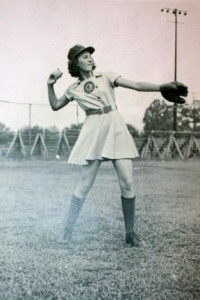
Carey yelled, “Batter up!”
And Delores pitched. She was just a girl, but she didn’t throw ‘like a girl.’
Just four short years before, the advent of World War II transformed the workforce in America by setting the stage for women to assume roles traditionally viewed as ‘man’s work.’ By the time Delores set foot on that Pascagoula ball field in 1946, the war had ended. Rosie the Riveter and Wendy the Welder were unlacing their steel-toed boots, letting their hair down from untied bandanas, and returning home from the munitions factories and shipyards where they had replaced the men who had been called into military service.
At the outset of the war, baseball commissioner Kenesaw Mountain Landis was concerned that the war might interrupt the major league season. He wrote President Franklin Roosevelt in January 1942 seeking guidance.
Roosevelt replied, “I honestly feel that it would be best for the country to keep baseball going.”
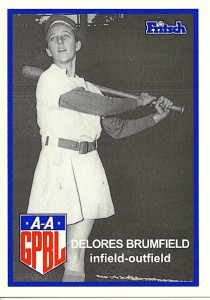
President Roosevelt also opined that the quality of the teams may be lowered since older players would have to be used to replace those younger men gone to war, but he was sure the popularity of the game would not suffer.
It is apparent that Philip K. Wrigley, the chewing gum magnate and owner of the major league Chicago Cubs, shared Roosevelt’s observance that the “quality” of major league talent would be diluted while the ball players were away in service to their country. Wrigley hedged his bets by forming the AAGPBL to spirit the interest in baseball during the uncertainties of war time. Teams in the AAGPBL were situated in Illinois, Indiana, Michigan, Minnesota, and Wisconsin.
I am an avid baseball fan, but must admit I was unaware of the existence of the AAGPBL until I saw the movie “A League of Their Own” starring Tom Hanks, Geena Davis and Madonna when it debuted in theatres in 1992. The craziest coincidence is that just one year prior to the movie’s release I had befriended Dr. Delores “Dee” Brumfield White, a physical education professor at Henderson State University in Arkadelphia. Dee and I worked on several community-oriented events together in Arkadelphia. It was a mutual enthusiasm for baseball that solidified our friendship. My wife, Kathryn, and I recently visited Dee at her home in Arkadelphia to learn about her experiences as a player in the AAGPBL.
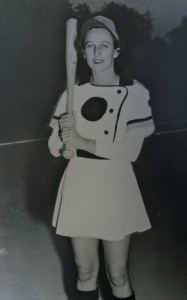
Delores Brumfield grew up in Prichard, Alabama and began playing sandlot baseball with the boys early on. Her talent received notice and she was encouraged to try out for the AAGPBL. Dee’s mother and grandmother drove her to that Pascagoula training camp to try to earn a place on a professional team.
Carey, a former major league player and future Hall of Famer, was impressed by Dee’s performance, but Dee was thought too young to be signed to a contract by the league even though she told Carey she was “almost 14.”
Dee returned home and joined a softball team at Brookley Air Force Base in Mobile, Alabama. A reporter with the Mobile Press Register touted her skills and contacted Carey the following year. Of course he invited her back to spring training in 1947.
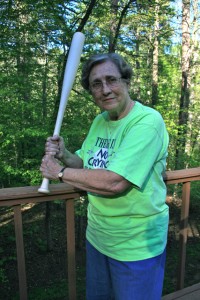
At 14, Dee packed her bags, traveled by train from Mobile to Miami, and caught a flight to Havana, Cuba to participate in spring training. Yes, her mother was reluctant to let her go, but Dee’s excitement and a pledge from an older fellow player from Mobile, Margie Holgerson, to serve as a chaperone swayed her family to send her on her way. The 1947 season was the first time the AAGPBL held spring training in Havana.
“I was too busy to be homesick,” Dee says about the experience.
Also training in Havana that spring was the major league’s Brooklyn Dodgers and a minor league team, the Montreal Royals, whose roster included Jackie Robinson. The Dodgers inked Robinson to a big league contract at the conclusion of spring training and he would break the major league’s color barrier on April 15, 1947. Dee was in Havana during an historical time.
Dee broke camp and entered the league as a rookie infielder with the South Bend Blue Sox. She was making $55 per week. A team chaperone assigned Daisy Junor, an older fellow player from Canada, to look after the rookie. Daisy gave Dee the nickname “Dolly,” and it stuck throughout her playing days. The players were strictly chaperoned, educated in the social graces, and expected to wear skirts when in public.
Typically two to three of the girls lived with a host family in the team’s home town. In her rookie season, Dee, now Dolly, roomed with Shoo Shoo Wirth in the home of Mr. and Mrs. Swen Warner near Playland Park in South Bend where the Blue Sox played their games.
She recalls a game on May 26, 1947: “It was my 15th birthday. I was a special guest on the radio show, the “Knot Hole Gang,” and they played a record of “I’m a Big Girl Now” at the game. Mrs. Warner made me a cake and let me call home to talk to my folks afterward. What a day that was!”
Dolly played seven years (1947–1953) in the AAGPBL, one with South Bend, four with the Kenosha Comets, and two with the Fort Wayne Daisies. In her first year in Fort Wayne (1952), Hall of Fame player Jimmie Foxx was her manager. Dee mentioned that playing for Foxx was a most memorable time, but he insisted on playing her out of position at second base. She broke her ankle late in the season that year and missed the playoffs.
For the 1953 season, Dee’s last in the league, Bill Allington replaced Jimmie Foxx as manager of the Fort Wayne team. Allington moved Dee back to her preferred position at first base and her hitting flourished. She finished the year with a batting average of .332, second in the league to her teammate, Joanne Weaver, who Dee says is the finest player she knew during her playing days.
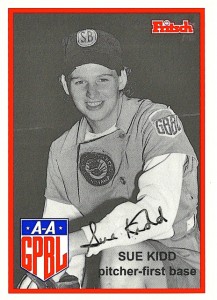
Dee shared with me that getting to know women from all around the country was an enlightening experience for a young girl. She made me aware that she was one of two girls from Alabama to play in the league and that there were two players from Arkansas. One of the Arkansas girls, Sue Kidd, can be seen pitching in the reunion game at the National Baseball Hall of Fame in the closing scene of the movie, “A League of Their Own.”
Curious, I called Sue Kidd at her home in Choctaw and quickly discovered that she has relatives in Mountain Home, nieces Lisa Henderson and Libby Kidd. Sue was a pitcher for the South Bend Blue Sox for five seasons (1950–1954) and once pitched both ends of a double header. She also has a no-hitter to her credit. The Blue Sox won two league championships while Sue was a team member. Sue remembered Delores “Dolly” Brumfield White being a “good hitter.”
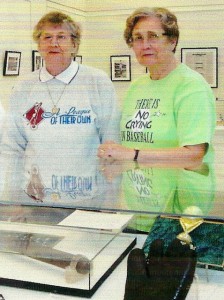
Both of these marvelous women credit baseball with opening doors to higher education. Their playing schedules had allowed them to balance baseball careers with the successful pursuit of a college degree. Sue received a masters in physical education from Arkansas State Teachers College and taught primarily in Indiana high schools for many years. Dee has a doctorate in physical education from Southern Mississippi University, and retired from teaching at Henderson State University in 1994. Dee is a past president of the AAGPBL Players Association.
The AAGPBL was short lived, lasting 12 seasons from 1943 through 1954. More than 600 women played in the league. “Batter up! Hear that call!” is the opening line of the official song of the AAGPBL, written by two players during the league’s hey-day. This tune was used as the theme song for “A League of Their Own.”
Just as many young men heard the call to military service in the early 1940s, these marvelous women heard the crack of the bat and responded to excel in a boy’s game long before the passage of Title IX of the Education Amendments of 1972, a civil rights law requiring girls to be given equal access to educational opportunities, including sports.
Today, Dee lives within walking distance of the women’s softball field on the campus of Henderson State University in Arkadelphia not much unlike her circumstances during that rookie season of 1947. Only now Dee sits in the stands of the playing field named in her honor and cheers for those playing the game. How marvelous is that!
All of the women who played in the AAGPBL are featured in a permanent exhibit at the National Baseball Hall of Fame in Cooperstown, New York. It is clear that these marvelous women are truly in “a league of their own.”
M! June/July 2012

Anonymous
Love this story. Thanks for sharing.
Tyson wolf
Thanks for the story. The ladies that played in the AAGPBL were amazing. Wish the league could have caught on and lasted. Don’t care for modern MLB.